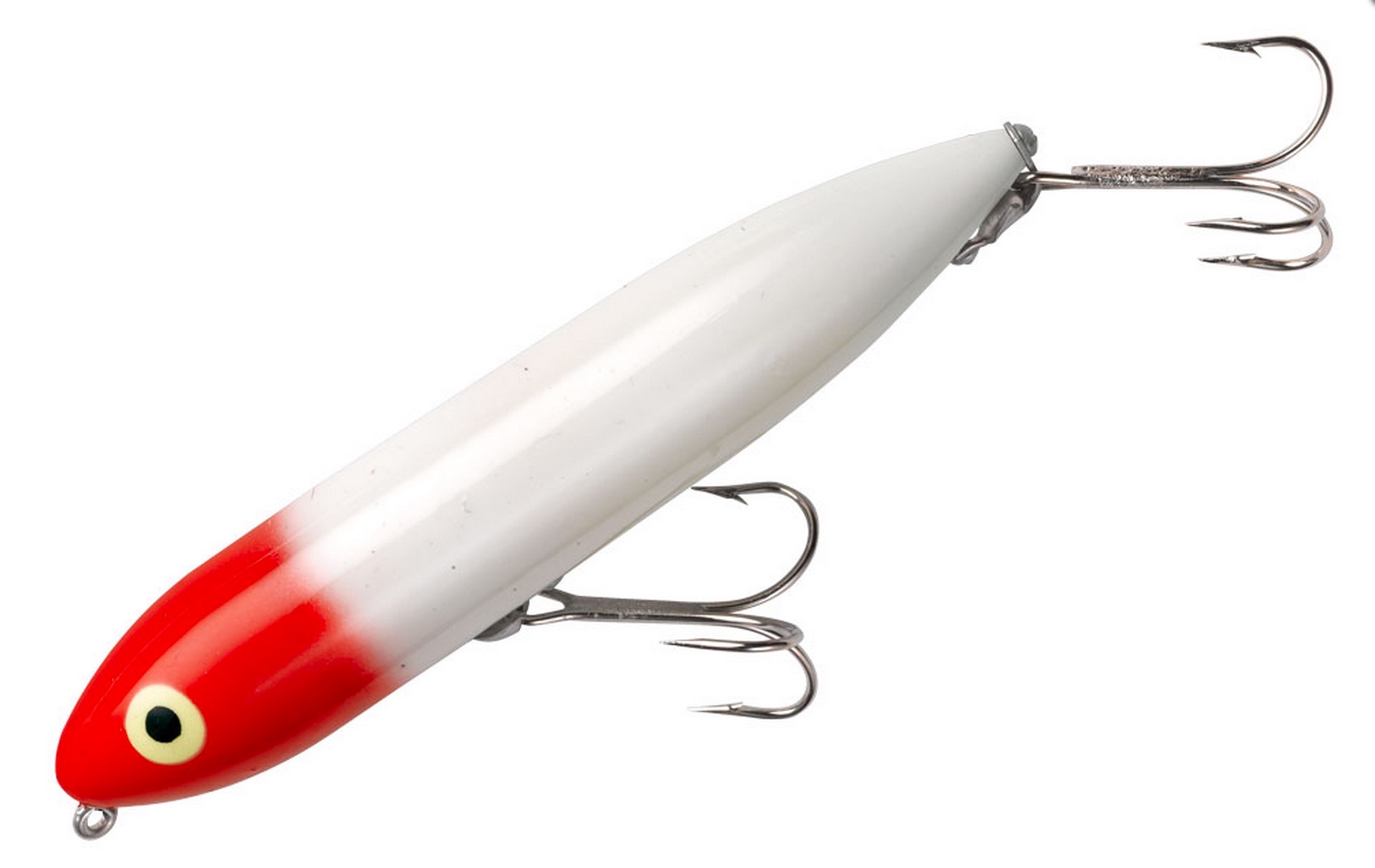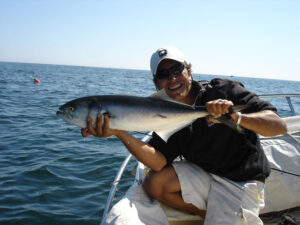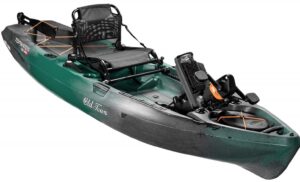When it comes to ocean fishing, every angler knows that having the right lure can make all the difference between a successful day on the water and going home empty-handed. But with so many options available, how do you choose the best ocean fishing lure for your needs? In this comprehensive guide, we’ll explore the world of ocean fishing lures, covering everything from the different types of lures to their unique characteristics and how to use them effectively. So grab your fishing rod, put on your sea legs, and let’s dive into the wonderful world of ocean fishing lures!
The Basics of Ocean Fishing Lures
Before we dive into the details, let’s start with the basics. Ocean fishing lures are artificial baits designed to attract fish and entice them to bite. These lures come in a variety of shapes, sizes, colors, and materials, each with their own unique characteristics and advantages.
Whether you’re targeting large game fish like marlin and tuna or going after smaller species like snapper and mackerel, there’s a lure out there that’s perfect for the job. The key is understanding the different types of ocean fishing lures and how they work.
1. Jigs
Jigs are one of the most versatile and widely used types of ocean fishing lures. They consist of a weighted head and a hook, often adorned with a colorful skirt or soft plastic bait. The weighted head allows the jig to sink quickly to the desired depth, while the skirt or bait mimics the movement of a wounded baitfish, enticing predatory fish to strike.
One of the great things about jigs is their versatility. They can be used in a variety of fishing techniques, including vertical jigging, casting, and trolling. They are particularly effective for targeting bottom-dwelling species like grouper and snapper.
2. Plugs
If you’re looking to make a big splash and attract the attention of aggressive predators, plugs are the way to go. These lures are designed to mimic the appearance and movement of injured baitfish, creating a commotion on the water’s surface that is irresistible to hungry game fish.
Plugs come in a wide range of shapes and sizes, from small diving plugs that imitate small baitfish to large surface poppers that create a loud popping sound when retrieved. They are particularly effective for targeting species like striped bass, tarpon, and mahi-mahi.
3. Soft Plastics
Soft plastic lures are a popular choice among anglers who want the flexibility to imitate a wide range of baitfish and other prey. These lures are made from a soft, flexible material that mimics the texture and movement of real baitfish, making them incredibly lifelike.
Soft plastics come in a variety of shapes and sizes, from swimbaits and jerkbaits to worms and grubs. They can be rigged on a jig head, weedless hook, or used as a trailer on a spinnerbait or buzzbait. Their versatility and lifelike action make them a go-to lure for many anglers targeting a variety of species.
The Science of Colors: Choosing the Right Lure
When it comes to ocean fishing lures, color plays a crucial role in attracting fish. Different fish species have different color preferences and visual capabilities, so it’s important to choose the right color lure for your target species.
While there is no one-size-fits-all answer when it comes to lure color, there are some general guidelines that can help you make an informed decision:
- For clear water conditions, choose lures with natural colors like silver, white, and translucent shades.
- In murky or stained water, opt for lures with bright, contrasting colors like chartreuse, orange, and hot pink.
- If you’re fishing in low-light conditions or during dawn and dusk, consider using lures with dark colors like black, purple, and blue.
It’s worth noting that fish can also be attracted to lures based on their movement and vibration, so color should not be the only factor to consider. Experimenting with different colors and lure types is often the best way to find what works in your specific fishing spot.
Choosing the Right Lure for Different Fishing Techniques
Now that we’ve covered the different types of ocean fishing lures and their colors, let’s explore how to choose the right lure for different fishing techniques:
1. Trolling
Trolling is a popular technique for covering a large area of water and targeting pelagic species like tuna, marlin, and wahoo. When trolling, it’s important to choose lures that can withstand high speeds and create an enticing action in the water.
Deep-diving plugs, such as the Rapala X-Rap, are excellent choices for trolling as they can reach depths of 20 feet or more. These plugs mimic the movement of injured baitfish and create a strong vibration that attracts predatory fish from a distance.
Another popular lure for trolling is the skirted trolling lure, also known as a “hoochie” or “tuna feather.” These lures consist of a lead head adorned with a colorful skirt and a hook. They are particularly effective for targeting species like mahi-mahi, tuna, and billfish.
2. Casting
If you prefer a more hands-on approach to fishing, casting is the way to go. This technique involves casting your lure into likely fish-holding areas, such as rocky shorelines, reefs, and weed beds, and retrieving it back to the boat.
For casting, jigs and soft plastics are the go-to lures for many anglers. Jigs can be cast long distances and worked back to the boat with a variety of retrieve techniques, including hopping, twitching, and dragging along the bottom.
Soft plastics, on the other hand, can be rigged on a weedless hook and worked through heavy cover without snagging. They can be retrieved with a steady retrieve or with a more erratic action to imitate a wounded baitfish.
3. Vertical Jigging
Vertical jigging is a popular technique for targeting bottom-dwelling species like grouper, snapper, and amberjack. This technique involves dropping a heavy jig to the bottom and then jigging it up and down to attract the attention of fish.
When it comes to vertical jigging, the key is choosing a jig with the right weight and shape for the depth and current conditions. Jigs with a slim profile and a long, slender shape are ideal for vertical jigging as they sink quickly and have a lifelike action in the water.
Colors like silver, white, and chartreuse are often effective for vertical jigging as they mimic the appearance of baitfish and stand out in deep water.
Humor in Ocean Fishing Lures: Reeling in the Fun
While ocean fishing is a serious sport for many, there’s always room for a little humor on the water. Some fishing lure manufacturers have taken the opportunity to inject some fun and laughter into their products, creating lures that not only catch fish but also put a smile on your face.
One example is the “Big Mouth Billy Bass” lure, a popular novelty item that features a singing fish mounted on a lure. When activated, the fish sings and dances to popular tunes, providing entertainment for anglers and their fishing buddies.
Another example is the “Crazy Chicken” lure, a wacky creation that mimics the appearance and movement of a swimming chicken. This lure is not only effective for catching fish but also creates plenty of laughs and smiles on the water.
While these humorous lures may not be suitable for every fishing situation, they can add an element of fun and lightheartedness to your fishing trips. After all, fishing is not just about catching fish; it’s also about enjoying the experience and creating lasting memories.
In Conclusion
Ocean fishing lures are essential tools for any angler looking to reel in the big catch. Understanding the different types of lures, their colors, and how to use them effectively is key to success on the water.
Whether you prefer the versatility of jigs, the excitement of plugs, or the lifelike action of soft plastics, there’s a lure out there that’s perfect for your fishing needs. Remember to consider the color preferences of your target species and experiment with different lure types to find what works best in your fishing spot.
And don’t forget to have a little fun along the way! Humorous lures can add an extra element of enjoyment to your fishing trips and create lasting memories with your fishing buddies.
So next time you head out to the open sea, make sure you have the right ocean fishing lure in your tackle box and get ready to reel in the big catch with style and humor!
FAQs (Frequently Asked Questions)
1. What is the best lure for catching marlin?
The best lure for catching marlin is often a large, brightly colored skirted trolling lure. These lures create a commotion on thewater’s surface and mimic the appearance of a wounded baitfish, attracting the attention of marlin. Popular choices include the Moldcraft Super Chugger and the Black Bart Breakfast Lure.
2. Can I use freshwater lures for ocean fishing?
While freshwater lures can sometimes be effective in certain ocean fishing situations, it’s generally recommended to use lures specifically designed for saltwater fishing. Saltwater lures are typically made with corrosion-resistant materials and are better suited to withstand the harsh conditions of the ocean.
3. How do I choose the right size lure?
Choosing the right size lure depends on the size of the fish you’re targeting and the conditions you’re fishing in. As a general rule, larger lures are more effective for targeting larger game fish, while smaller lures are better suited for smaller species. Additionally, consider the size of the baitfish in the area you’re fishing and choose a lure that closely matches their size.
4. Are there any eco-friendly ocean fishing lures?
Yes, there are eco-friendly ocean fishing lures available on the market. These lures are made from sustainable materials and are designed to minimize their impact on the environment. Examples include lures made from biodegradable materials or those that use recycled components. When choosing lures, look for brands that prioritize sustainability and environmental responsibility.
5. What is the best time of day for ocean fishing?
The best time of day for ocean fishing can vary depending on the species you’re targeting and the location you’re fishing in. Generally, early morning and late afternoon tend to be productive times as fish are more active during these periods. However, it’s important to research the specific fishing spot and consult local fishing reports or experienced anglers for the best time to fish in that particular area.
Summary
Ocean fishing lures are essential tools for any angler looking to maximize their chances of success on the water. Understanding the different types of lures, their colors, and how to use them effectively is key to reeling in the big catch.
Jigs, plugs, and soft plastics are among the most popular types of ocean fishing lures, each offering unique advantages and versatility. Choosing the right lure depends on the fishing technique, target species, and water conditions.
Color plays a crucial role in attracting fish, and choosing the right color lure depends on factors such as water clarity, light conditions, and the visual preferences of the target species. It’s important to experiment with different colors and lure types to find what works best in your specific fishing spot.
While ocean fishing is a serious pursuit, injecting a bit of humor into your gear can add an extra element of fun to your fishing trips. Novelty lures that sing or mimic unusual creatures can provide entertainment and create lasting memories.
As with any form of fishing, it’s important to practice responsible angling and consider the environmental impact of your gear. Opting for eco-friendly lures made from sustainable materials is a great way to minimize your footprint and help preserve our oceans for future generations.
So, next time you head out for an ocean fishing adventure, remember to choose your lures wisely, have a little fun, and enjoy the thrill of reeling in the big catch!





